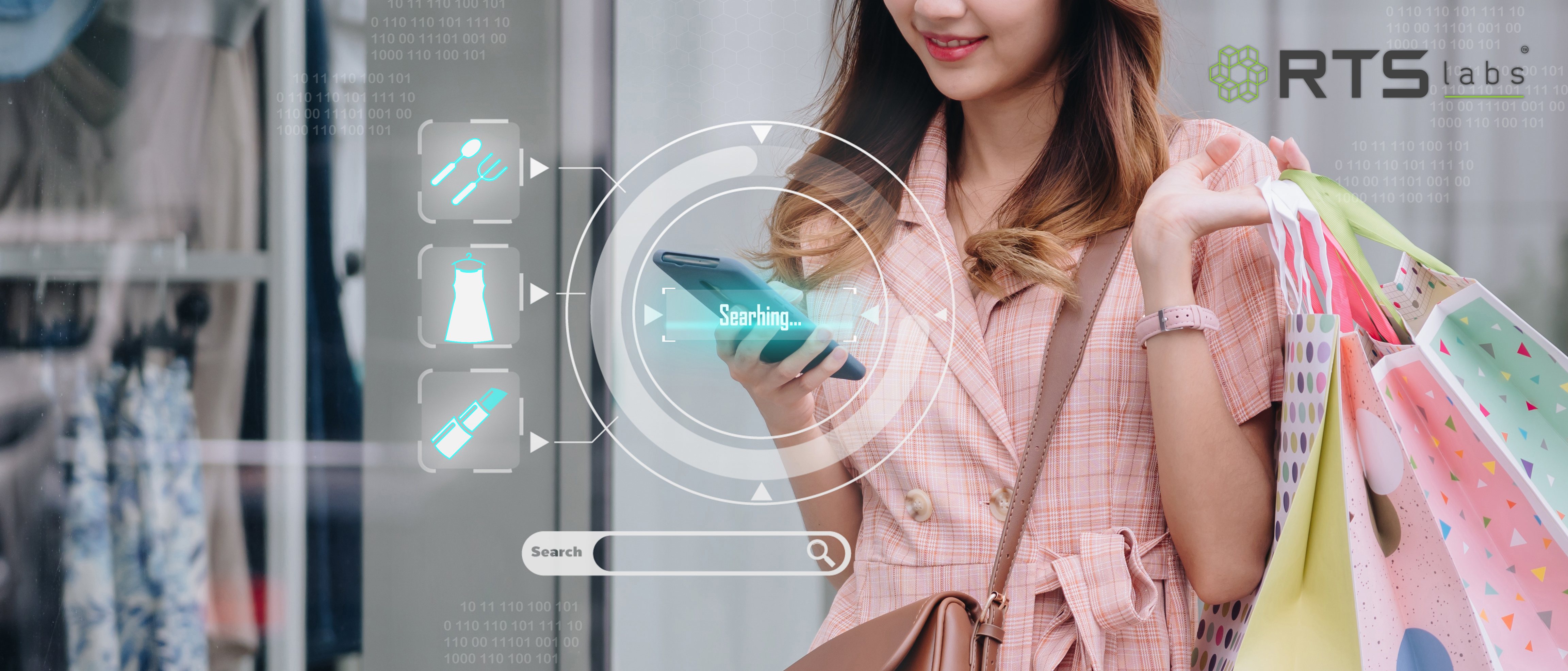- Discover how to enhance customer personalization and boost retail strategy with generative AI.
- Learn the benefits, applications, and best practices of integrating generative AI in retail.
- Stay ahead in the retail industry with insights into future trends and ethical AI practices.
In the rapidly changing retail industry, businesses are constantly seeking new ways to enhance customer experiences, streamline operations, and stay competitive. One of the most promising technologies in this domain is generative AI. By leveraging advanced algorithms, generative AI enables retailers to generate new content, predict trends, and personalize customer interactions. This article delves into the myriad benefits and applications of generative AI in the retail sector, offering insights into how it can significantly boost your retail strategy.
What is Generative AI?
Generative AI refers to a subset of artificial intelligence that focuses on creating new data based on existing patterns. Unlike traditional AI models that rely on predefined rules, generative AI uses deep learning techniques to understand and replicate complex patterns found in data. This technology can produce diverse outputs, including text, images, and even product designs, making it highly versatile and applicable across various retail functions.
How Generative AI Differs from Traditional AI
While traditional AI primarily focuses on recognizing patterns and making predictions based on historical data, generative AI goes a step further by creating entirely new content. For example, instead of merely identifying popular products, generative AI can design new products based on emerging trends and customer preferences.
Key Components of Generative AI
- Deep Learning Algorithms: These algorithms are the backbone of generative AI, enabling it to learn from vast amounts of data.
- Neural Networks: These networks simulate the human brain, allowing the AI to understand and generate complex patterns.
- Training Data: High-quality data is crucial for training generative AI models, ensuring accurate and relevant outputs.
Benefits of Generative AI in Retail
Generative AI offers numerous benefits that can significantly enhance various aspects of retail operations. Here are some of the key advantages:
Enhanced Customer Personalization
Generative AI enables retailers to provide highly personalized shopping experiences by analyzing customer data and generating tailored product recommendations. This level of personalization can lead to increased customer satisfaction and loyalty.
- Example: A clothing retailer can use generative AI to suggest outfits based on a customer’s past purchases and current fashion trends.
Improved Inventory Management
By predicting demand patterns and generating accurate sales forecasts, generative AI helps retailers optimize their inventory levels, reducing the risk of overstocking or stockouts.
- Example: A grocery store can use generative AI to forecast the demand for perishable goods, ensuring optimal stock levels and minimizing waste.
Innovative Product Design
Generative AI can assist in designing new products by analyzing market trends and consumer preferences. This capability allows retailers to stay ahead of the competition by offering unique and appealing products.
- Example: A furniture retailer can use generative AI to create new furniture designs that align with current interior design trends.
Streamlined Marketing Campaigns
Generative AI can generate personalized marketing content, such as emails and advertisements, that resonate with individual customers. This targeted approach can improve engagement and conversion rates.
- Example: An online retailer can use generative AI to craft personalized email campaigns that recommend products based on a customer’s browsing history.
Data-Driven Decision Making
By providing actionable insights and predictive analytics, generative AI empowers retailers to make informed decisions that enhance their overall strategy.
- Example: A retail chain can use generative AI to analyze sales data and identify the most profitable product lines, informing future stocking decisions.
Enhanced Visual Merchandising
Generative AI can assist in creating appealing visual merchandising setups by generating design ideas and layouts that attract customers’ attention and encourage purchases.
- Example: A retail store can use generative AI to design window displays that reflect seasonal trends and customer preferences, driving foot traffic.
Optimized Pricing Strategies
Generative AI can help retailers develop dynamic pricing strategies by analyzing market conditions, competitor pricing, and customer behavior. This allows retailers to optimize their pricing to maximize revenue and stay competitive.
- Example: An e-commerce platform can use generative AI to adjust prices in real-time based on demand fluctuations and competitor activity.
Enhanced Customer Service
Generative AI-powered chatbots and virtual assistants can handle customer inquiries efficiently, providing quick and accurate responses. This enhances the overall customer service experience and frees up human agents to focus on more complex tasks.
- Example: An online retailer can deploy a generative AI chatbot to assist customers with common questions, such as order status and return policies.
How Generative AI Works in Retail
Understanding how generative AI functions can help retailers better implement this technology in their operations.
Data Collection and Preprocessing
The first step involves collecting and preprocessing data from various sources, such as customer transactions, social media interactions, and market trends. High-quality data is essential for training generative AI models effectively.
Model Training
Once the data is prepared, generative AI models are trained using deep learning algorithms. These models learn to recognize patterns and generate new data based on the training inputs.
Application of AI Models
Trained generative AI models can be applied across different retail functions, from product design to customer service. The AI continuously learns and adapts, ensuring its outputs remain relevant and accurate.
Integration with Retail Systems
To maximize the benefits of generative AI, it should be integrated with existing retail systems, such as CRM platforms and inventory management systems. This integration enables seamless data flow and enhances overall efficiency.

Best Practices for Implementing Generative AI in Retail
To successfully implement generative AI in retail, consider the following best practices:
Start with Clear Objectives
Define clear objectives for your generative AI initiatives, such as improving customer personalization or optimizing inventory management. This focus ensures that the technology aligns with your business goals.
Invest in High-Quality Data
High-quality data is crucial for training effective generative AI models. Invest in robust data collection and preprocessing techniques to ensure the accuracy and relevance of your AI outputs.
Collaborate with Experts
Partner with AI experts or consultancies to ensure that your generative AI initiatives are guided by best practices and industry insights. This collaboration can help you avoid common pitfalls and maximize the technology’s potential.
Continuously Monitor and Adapt
Generative AI models require continuous monitoring and adaptation to remain effective. Regularly review the performance of your AI initiatives and make adjustments as needed to keep pace with changing market conditions and customer preferences.
Ensure Ethical Use
Ensure that your use of generative AI complies with ethical standards and regulations. This includes protecting customer privacy and avoiding biased or discriminatory AI outputs.
Common Challenges and How to Overcome Them
Implementing generative AI in retail comes with its own set of challenges. Here are some common issues and strategies to overcome them:
Data Quality Issues
Poor-quality data can lead to inaccurate AI outputs. To address this, invest in robust data collection and preprocessing techniques to ensure the accuracy and relevance of your data.
Integration Challenges
Integrating generative AI with existing retail systems can be complex. Work with IT experts to ensure seamless integration and data flow between systems.
Resistance to Change
Employees may be resistant to adopting new AI technologies. Provide comprehensive training and communicate the benefits of generative AI to encourage buy-in and smooth adoption.
Ethical Concerns
Ensure that your use of generative AI complies with ethical standards and regulations. This includes protecting customer privacy and avoiding biased or discriminatory AI outputs.
Keeping Up with Rapid Advancements
The field of generative AI is rapidly evolving. Stay updated with the latest developments and continuously adapt your AI initiatives to leverage new advancements and maintain a competitive edge.

Future Trends and Outlook for Generative AI in Retail
Generative AI is poised to play an increasingly significant role in the retail industry. Here are some future trends and predictions:
Increased Personalization
As generative AI technology advances, retailers will be able to offer even more personalized and engaging shopping experiences. This increased personalization can drive customer loyalty and boost sales.
Enhanced Customer Service
Generative AI will enable retailers to provide more efficient and effective customer service, such as through AI-powered chatbots and virtual assistants. These tools can handle routine inquiries, allowing human agents to focus on more complex issues.
Smarter Inventory Management
Future advancements in generative AI will enhance inventory management capabilities, enabling retailers to predict demand more accurately and reduce waste. This can lead to significant cost savings and improved sustainability.
New Product Innovation
Generative AI will continue to drive innovation in product design, allowing retailers to create unique and appealing products that meet evolving customer preferences.
Ethical AI Practices
As the use of generative AI in retail grows, there will be a greater emphasis on ethical AI practices, including transparency, fairness, and accountability. Retailers will need to ensure that their AI initiatives comply with ethical standards and regulations.
Integration with Augmented Reality (AR)
Generative AI will increasingly be integrated with AR technologies to create immersive shopping experiences. Retailers can use AI-generated content to enhance virtual fitting rooms and interactive product displays, offering customers a more engaging way to shop online.
Improved Supply Chain Management
Generative AI can optimize supply chain management by predicting demand fluctuations and suggesting efficient routes and schedules for product delivery. This can lead to reduced operational costs and faster delivery times.
FAQ: Boost Your Retail Strategy with Generative AI
Q1: What is Generative AI? A1: Generative AI is a subset of artificial intelligence focused on creating new data based on existing patterns. Unlike traditional AI models that rely on predefined rules, generative AI uses deep learning techniques to understand and replicate complex patterns found in data. It can produce diverse outputs, including text, images, and even product designs, making it highly versatile and applicable across various retail functions.
Q2: How does Generative AI differ from traditional AI? A2: Traditional AI primarily focuses on recognizing patterns and making predictions based on historical data. In contrast, generative AI goes a step further by creating entirely new content. For example, while traditional AI might identify popular products, generative AI can design new products based on emerging trends and customer preferences.
Q3: What are the key benefits of Generative AI in retail? A3: Generative AI offers several benefits for retail, including:
- Enhanced customer personalization through tailored product recommendations.
- Improved inventory management by predicting demand patterns.
- Innovative product design by analyzing market trends and consumer preferences.
- Streamlined marketing campaigns with personalized content.
- Data-driven decision-making using predictive analytics.
- Optimized pricing strategies by analyzing market conditions and customer behavior.
Q4: How can Generative AI enhance customer personalization? A4: Generative AI can analyze customer data to generate personalized product recommendations. For example, a clothing retailer can suggest outfits based on a customer’s past purchases and current fashion trends, leading to increased customer satisfaction and loyalty.
Q5: How does Generative AI improve inventory management? A5: Generative AI helps retailers optimize inventory levels by predicting demand patterns and generating accurate sales forecasts. For instance, a grocery store can use generative AI to forecast the demand for perishable goods, ensuring optimal stock levels and minimizing waste.
Q6: What role does Generative AI play in innovative product design? A6: Generative AI can assist in designing new products by analyzing market trends and consumer preferences. This allows retailers to stay ahead of the competition by offering unique and appealing products. For example, a furniture retailer can use generative AI to create new furniture designs that align with current interior design trends.
Q7: How can retailers implement Generative AI successfully? A7: Retailers can successfully implement generative AI by following best practices:
- Start with clear objectives, such as improving customer personalization or optimizing inventory management.
- Invest in high-quality data for training effective AI models.
- Collaborate with AI experts or consultants to ensure best practices.
- Continuously monitor and adapt AI initiatives to remain effective.
- Ensure ethical use of AI, including protecting customer privacy and avoiding biased outputs.
Q8: What are common challenges in implementing Generative AI in retail? A8: Common challenges include data quality issues, integration challenges with existing systems, employee resistance to adopting new technologies, ethical concerns, and keeping up with rapid advancements in AI technology. Retailers can overcome these challenges by investing in robust data collection, working with IT experts for seamless integration, providing comprehensive training, and staying updated with the latest AI developments.
Q9: What are the future trends in Generative AI for retail? A9: Future trends in generative AI for retail include:
- Increased personalization in shopping experiences.
- Enhanced customer service with AI-powered chatbots.
- Smarter inventory management with improved demand forecasting.
- New product innovation driven by AI.
- Ethical AI practices with a focus on transparency and fairness.
- Integration with augmented reality for immersive shopping experiences.
- Improved supply chain management with predictive analytics.
Further Reading
- “Top 5 Retail Use Cases for Generative AI in 2024” by Publicis Sapient This article highlights the significant applications of generative AI in retail, including customer service enhancements, personalized shopping experiences, and automated content generation. It discusses how retailers can leverage AI to create engaging customer interactions and streamline backend operations for increased efficiency. Read more
- “Generative AI for Retail: Key Use Cases and Examples in 2024” by Aisera This source outlines six key use cases of generative AI in retail, emphasizing improvements in customer support, self-service solutions, intelligent order management, and personalized product descriptions. It showcases how generative AI models can elevate customer experiences and operational efficiency. Read more
- “How Generative AI Is Redefining the Retail Industry” by NVIDIA Blog This article explores how generative AI is transforming retail by providing personalized shopping advisors, adaptive advertising, and improved product descriptions. It also discusses the future potential of generative AI in creating multimodal content and enhancing supply chain management. Read more
These resources provide in-depth insights and practical examples of how generative AI is being applied in the retail industry to drive innovation and efficiency.
Maximizing Retail Success with Generative AI
Incorporating generative AI into your retail strategy can offer significant benefits, from enhanced customer personalization to improved inventory management. By understanding the key components, best practices, and potential challenges associated with generative AI, retailers can effectively leverage this technology to stay competitive and drive business success.
As generative AI continues to evolve, staying informed about future trends and advancements will be crucial for maximizing its potential in the retail sector.
For further reading on the applications of AI in retail and staying updated with the latest industry insights, consider exploring reputable sources and industry reports.
Boost your retail strategy with generative AI today and unlock new opportunities for innovation and growth in the retail industry.
Ready to adopt AI capabilities into your business? Partner with RTS Labs, your trusted technology consultants, to implement cutting-edge AI technologies tailored to your needs.







